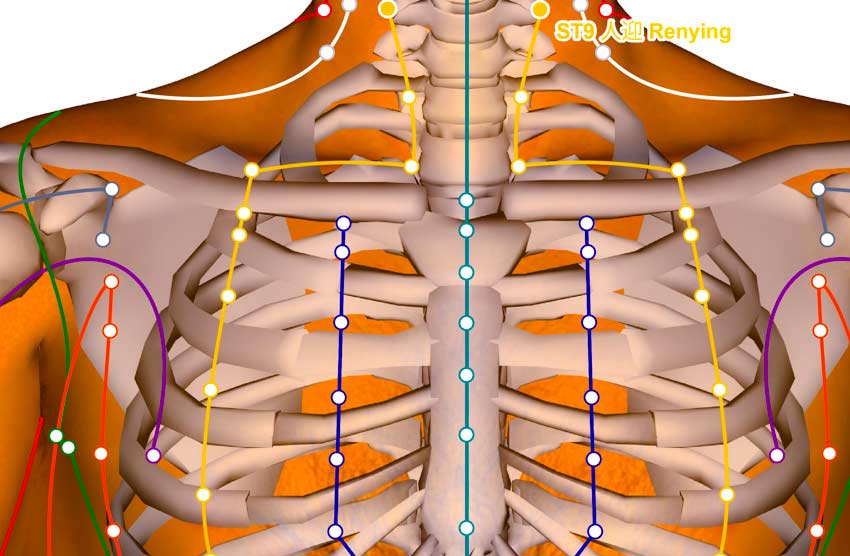Acupuncture is effective for the alleviation of musculoskeletal pain, headaches, shoulder pain, and arthritis related pain. Memorial Sloan Kettering Cancer Center (New York, NY) researchers conclude that the analgesic effects of acupuncture are superior to sham controls and the pain relief persists over time. The research team concludes that acupuncture is an effective treatment modality for chronic pain and referral to an acupuncturist is a reasonable treatment option.
In a meta-analysis of 20,827 patients across 39 clinical trials, researchers determined that acupuncture’s pain relieving effects for patients with musculoskeletal pain, headaches, shoulder pain, and arthritis persist over time-with only a 15% decrease in treatment efficacy after one year. The sham controlled trials indicate an additional important factor. The researchers note that the effects of acupuncture cannot be explained by placebo effects.
A nuanced finding is that the analgesic effects of acupuncture are dose dependent. Increased numbers of acupuncture treatments produce superior patient outcomes with significant reductions in pain. The data also indicates that both manual acupuncture and electroacupuncture are equally effective.
Design Control
The sham control analysis highlights challenges in study design. Acupuncture’s analgesic effects were slightly better in studies using non-penetrating needle sham controls. This indicates that using penetrating needle sham acupuncture is active, producing relatively minor therapeutic benefits. This is consistent with the use of Ashi acupoints, indicating that using penetrating acupuncture needles near real acupuncture points is not an appropriate sham control.

Double-blinded and single-blinded study designs present challenges in research. One method used in acupuncture research is the application of Park sham devices. This apparatus administers both real filiform acupuncture needles and sham needles. The device securely holds either type of needle over the chosen acupoint. However, because it uses an insertion tube, the Park sham device cannot measure the effects of traditional free-hand needling.
The Park sham needle is used in single-blinded designs. This needle never penetrates the skin, its tip is blunt. When pressed, the needle retracts back up into the handle, giving the appearance of penetrating the skin. In actuality, the needle has telescoped upwardly into the handle.
Charing Cross Hospital (UK) researchers tested the effects of the Park sham needle in a small pilot study. They conclude "that the Park sham needle is an effective single-blind control." Given the size of the study, the researchers indicate that a larger study is an appropriate follow-up to confirm the appropriateness of this needle.
Large sample sizes increase confidence and accuracy in outcome determinations. As a result, the research from the Memorial Sloan Kettering Cancer Center is important. A sample size of 20,827 patients across 39 studies is significant. The results were published in The Journal of Pain, the official journal of the American Pain Society.
Acceptance
Recent years have seen increased attention to acupuncture’s pain relieving effects. Based on modern research, the American College of Physicians now formally recommends acupuncture for the treatment of back pain. Published in the Annals of Internal Medicine, clinical guidelines were developed by the American College of Physicians to present recommendations.
Citing quality evidence in modern research, the American College of Physicians notes that nonpharmacologic treatment with acupuncture for the treatment of chronic low back pain is recommended. The official grade by the American College of Physicians is a "strong recommendation." The recommendation was approved by the ACP Board of Regents and involves evidence based recommendations from doctors at the Penn Health System (Philadelphia, Pennsylvania), Minneapolis Veterans Affairs Medical Center (Minnesota), and the Yale School of Medicine (New Haven, Connecticut).
How Acupuncture Works
The clinical evidence in human trials is supported by objective data generated in laboratory research. University of California researchers have proven that electroacupuncture at acupoint ST36 (Zusanli) promotes enkephalin production, which dampens proinflammatory excitatory responses from the sympathetic nervous system. Electroacupuncture regulates preproenkephalin gene expression, a precursor substance that encodes proenkephalin, which then stimulates the production of enkephalin. The University of California research finds acupuncture’s ability to regulate preproenkephalin gene expression at least partially responsible for acupuncture’s ability to alleviate hypertension.
An investigation conducted by University of South Florida (Tampa) and Fujian University of Traditional Chinese Medicine (Fuzhou) researchers documents how acupuncture stops pain. The researchers note, "acupuncture exerts a remarkable analgesic effect on SCI [spinal cord injury] by also inhibiting production of microglial cells through attenuation of p38MAPK and ERK activation." Microglia are nervous system cells that secrete proinflammatory and neurotoxic mediators. Acupuncture alleviates pain by attenuating this response.
References:
Vickers, Andrew J., Emily A. Vertosick, George Lewith, Hugh MacPherson, Nadine E. Foster, Karen J. Sherman, Dominik Irnich, Claudia M. Witt, and Klaus Linde. "Acupuncture for chronic pain: update of an individual patient data meta-analysis." The Journal of Pain (2017).
To, May, and Caroline Alexander. "The effects of Park sham needles: a pilot study." Journal of integrative medicine 13, no. 1 (2015): 20-24.
Qaseem, Amir, Timothy J. Wilt, Robert M. McLean, and Mary Ann Forciea. "Noninvasive Treatments for Acute, Subacute, and Chronic Low Back Pain: A Clinical Practice Guideline From the American College of PhysiciansNoninvasive Treatments for Acute, Subacute, and Chronic Low Back Pain." Annals of Internal Medicine (2017).
Cevic, C and Iseri, SO. The effect of acupuncture on high blood pressure of patients using antihypertensive drugs. Acupuncture & electro-therapeutics research 2013; 38(1-2).
Lin, Lili, Nikola Skakavac, Xiaoyang Lin, Dong Lin, Mia C. Borlongan, Cesar V. Borlongan, and Chuanhai Cao. "Acupuncture-induced analgesia: the role of microglial inhibition." Cell transplantation 25, no. 4 (2016): 621-628.

![Diseases, Symptoms, tcm, [tcmwindow.com]](/uploadFile/adImg/2015/11/11/f5cbfcc0-4df5-4646-9b9a-f316651a0199.jpg)





